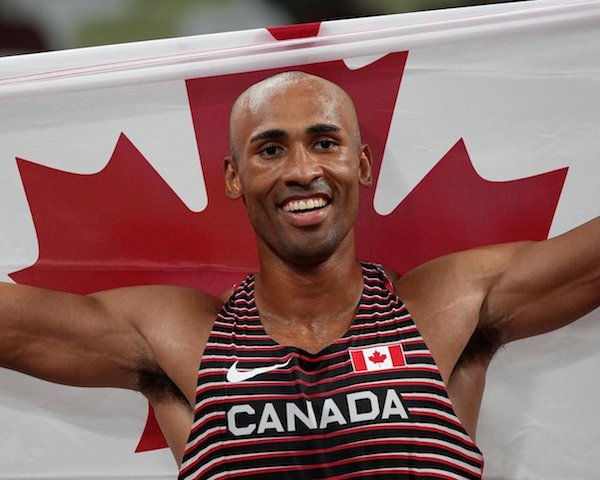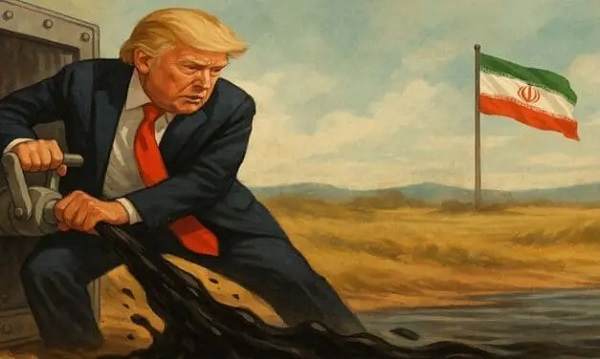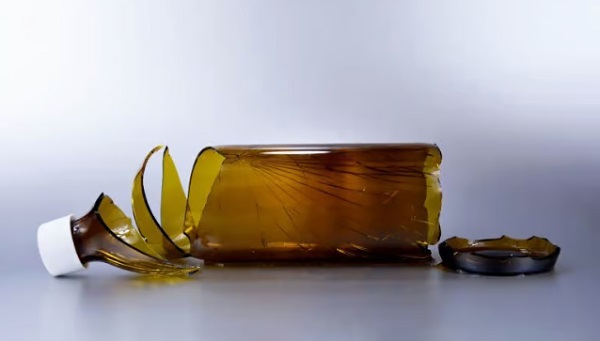Opinion
Success Of Canada’s Women Does Not Mean Men Failed

As usual, the Olympics delivered transcendent national moments for Canada.
It happens every Games. In 2010 the host city of Vancouver itself was the moment that provided a binding agent. In 1996 it was Donovan Bailey crushing the Americans on the track. In 1976 it was a lone high-jump silver medal by Greg Joy. This time in Tokyo it was Christine Sinclair & Co. (the women’s soccer team), a sprinter from Markham and a race walker from B.C. who remind Canadians of who they are, why they are, and how much reinforcement of a single nationality matters.

Except it rarely happens. Canada needs to win. Not all the time. Just enough to make the plucky challenger role thing work. Beating the U.S. in women’s soccer might be the ultimate underdog role that tells the 36 million chez nous that for all its horrific weather and language stress the Great White North is a good place to live.
Unfortunately the five percent who think they run modern Canada don’t count blessings they way they used to. A prime minister in a hurry to call an election during a pandemic— that he’s abetted— sees the roll of honour quite differently.
It’s now a diversity dance. In place of promoting unity while wearing the maple leaf the PM promotes separating Canadians by their Woke characteristics. Pitting segments of society to achieve peak tribal identity is his MO. In this Orwellian construct he’s fully backed by host broadcaster CBC, the rest of the bought media and labour leaders like Jerry Dias.
The laboured attempts to paint the Olympics as a political coming-out party was a hallmark of the CBC News Olympic features about Canada’s winners. When the Corp allowed its sports announcers like Steve Armitage, Mark Lee or Doug Dirks to call it straight you might be persuaded that it was your grandfather’s Olympics still.
Don’t be fooled. The PM who worships his brand of diversity (but practices otherwise) sees the Olympics as a blue-check exercise in drawing new lines between people who struggle at the best of times to find some unifying concept. (Just ask the CFL which adopted his “diversity” mantra but then was stiffed at its time of crisis by a government with loftier public goals to achieve alongside WE. )
According to Justin Trudeau Reality (taught by Gerry Butts) the final medal standings at the Tokyo Games should read something like this:
CDN. women athletes/ teams 19
Biopoc single athletes. 5
Muslim medal winners 1
LGBTQ (all nations) 182
Trans CDN athletes 1
Privileged white walkers 1
Gold medals for our Chinese friends 38
The loudest progressive braying will likely be about the preponderance of medals won by Canada’s (traditional) women athletes. Of the gold, silver and bronzes handed out to athletes (for them to put on themselves) women and teams of women garnered 19 medals.
It was a great show. From the first medal (Caileigh Filmer, Hillary Janssens for rowing) to the final gold (Kelsey Mitchell in cycling sprint) women did dominate the standings for Canadians. And beat the smug Americans in soccer. This led the usual suspects to gloat about how men couldn’t keep up/ were lacking moral fibre etc. Where would the nation be without the fruits of progressive feminism?
A few caveats here. In about half the nations in the world women are not allowed to compete at all or are severely hampered by religious doctrines or cannot get funding for the rigorous training needed to make an Olympic final. In short the talent pool that Canadian women swim in is clearly smaller by a large factor than that in which the male athletes compete.
So when you’re watching an Olympic final in rowing or cycling or wrestling the odds that a Canadian woman gets on the podium increase exponentially over what can be expected for a man. A good example is Kelsey Mitchell gold in pursuit. From RBC’s camps identifying her athletic talent to winning the gold was a stunning two years. It’s remarkable, but it’s also virtually impossible in a men’s competition.
It might also help the chances of Canadian men if so many elite athletes didn’t choose hockey as a sport. By the time many realize they won’t make the NHL it’s almost too late to get into a sport as late as Mithchell did.
Another factor aiding Canadian women continues to be the Title IX regulations governing American collegiate sport. U.S. schools have to offer an equal number of sports scholarships to women as to men. Often they cannot find enough elite athletes in some sports to fill out their quotas. (See the Felicity Huffman/ Lori Loughlin scandal )
And so Canadian women have flooded into the NCAA to receive elite training and competition. From swimming (Maggie MacNeil, Michigan) to basketball (Kia Nurse, Connecticut) to soccer (Christine Sinclair) many of Canada’s Olympians are honed outside the country thanks to evening the scholarships. Which solves the age-old dilemma of how to get Canadian sponsors to pony up for future Olympians.
The great question now as Trudeau tries to lock-in his concept of diversity is will the Canadian public finally accept the sporting version of his propaganda? Outside the plum events such as Olympics and world championships, the public has been reluctant to give up its traditional NHL and other team sports to root for women?
And how will it accept the new reality of trans athletes and gender fluidity? People tuning in for a sports event don’t react well when they find they’ve signed up for a BLM, CRT or Liberal Party lecture.
For now, enjoy. And don’t let any politician steal the glory of Canada’s Olympians.
Bruce Dowbiggin @dowbboy is the editor of Not The Public Broadcaster (http://www.notthepublicbroadcaster.com). The best-selling author of Cap In Hand is also a regular contributor to Sirius XM Canada Talks Ch. 167. A two-time winner of the Gemini Award as Canada’s top television sports broadcaster, his new book Personal Account with Tony Comper is now available on http://brucedowbigginbooks.ca/book-personalaccount.aspx
Agriculture
Canada’s supply management system is failing consumers

This article supplied by Troy Media.
The supply management system is cracking. With imports climbing, strict quotas in place and Bill C202 on the table, we’re struggling to feed ourselves
Canada’s supply management system, once seen as a pillar of food security and agricultural self-sufficiency, is failing at its most basic function:
ensuring a reliable domestic supply.
According to the Canadian Association of Regulated Importers, Canada imported more than 66.9 million kilograms of chicken as of June 14, a 54.6 per cent increase from the same period last year. That’s enough to feed 3.4 million Canadians for a full year based on average poultry consumption—roughly 446 million meals. Under a tightly managed quota system, those meals were supposed to be produced domestically. Instead imports now account for more than 12 per cent of this year’s domestic chicken production, revealing a growing dependence on foreign supply.
Supply management is Canada’s system for regulating dairy, poultry and egg production. It uses quotas and fixed prices to match domestic supply with demand while limiting imports, intended to protect farmers from global price swings and ensure stable supply.
To be fair, the avian influenza outbreak has disrupted poultry production and partially explains the shortfall. But even with that disruption, the numbers are staggering. Imports under trade quotas set by the World Trade Organization, the Canada-United States Mexico Agreement and the Comprehensive and Progressive Agreement for Trans-Pacific Partnership are running at or near their allowable monthly share—known as pro-rata
levels—signalling not just opportunity, but urgency. Supplementary import permits, meant to be used only in emergencies, have already surpassed 48 million kilograms, exceeding total annual import volumes in some previous years. This isn’t a seasonal hiccup. It’s a systemic failure.
The system, designed to buffer domestic markets from global volatility, is cracking under internal strain. When emergency imports become routine, we have to ask: what exactly is being managed?
Canada’s most recent regulated chicken production cycle, which ended May 31, saw one of the worst shortfalls in over 50 years. Strict quota limits stopped farmers from producing more to meet demand, leaving consumers with higher grocery bills and more imported food, shaking public confidence in the system.
Some defenders insist this is an isolated event. It’s not. For the second straight week, Canada has hit pro-rata import levels across all chicken categories. Bone-in and processed poultry, once minor players in emergency import programs, are now essential just to keep shelves stocked.
And the dysfunction doesn’t stop at chicken. Egg imports under the shortage allocation program have already topped 14 million dozen, a 104 per cent jump from last year. Not long ago, Canadians were mocking high U.S. egg prices. Now theirs have fallen. Ours haven’t.
All this in a country with $30 billion in quota value, supposedly designed to protect domestic production and reduce reliance on imports. Instead, we’re importing more and paying more.
Rather than addressing these failures, Ottawa is looking to entrench them. Bill C202, now before the Senate, seeks to shield supply management from future trade talks, making reform even harder. So we must ask: is this really what we’re protecting?
Meanwhile, our trading partners are taking full advantage. Chile, for instance, has increased chicken exports to Canada by more than 63 per cent, now accounting for nearly 96 per cent of CPTPP-origin imports. While Canada doubles down on protectionism, others are gaining long-term footholds in our market.
It’s time to face the facts. Supply management no longer guarantees supply. When a system meant to ensure resilience becomes a source of fragility, it’s no longer an asset—it’s an economic liability.
Dr. Sylvain Charlebois is a Canadian professor and researcher in food distribution and policy. He is senior director of the Agri-Food Analytics Lab at Dalhousie University and co-host of The Food Professor Podcast. He is frequently cited in the media for his insights on food prices, agricultural trends, and the global food supply chain.
Troy Media empowers Canadian community news outlets by providing independent, insightful analysis and commentary. Our mission is to support local media in helping Canadians stay informed and engaged by delivering reliable content that strengthens community connections and deepens understanding across the country.
Economy
Trump opens door to Iranian oil exports

This article supplied by Troy Media.
U.S. President Donald Trump’s chaotic foreign policy is unravelling years of pressure on Iran and fuelling a surge of Iranian oil into global markets. His recent pivot to allow China to buy Iranian crude, despite previously trying to crush those exports, marks a sharp shift from strategic pressure to transactional diplomacy.
This unpredictability isn’t just confusing allies—it’s transforming global oil flows. One day, Trump vetoes an Israeli plan to assassinate Iran’s supreme leader, Ayatollah Khamenei. Days later, he calls for Iran’s unconditional surrender. After announcing a ceasefire between Iran, Israel and the United States, Trump praises both sides then lashes out at them the next day.
The biggest shock came when Trump posted on Truth Social that “China can now continue to purchase Oil from Iran. Hopefully, they will be purchasing plenty from the U.S., also.” The statement reversed the “maximum pressure” campaign he reinstated in February, which aimed to drive Iran’s oil exports to zero. The campaign reimposes sanctions on Tehran, threatening penalties on any country or company buying Iranian crude,
with the goal of crippling Iran’s economy and nuclear ambitions.
This wasn’t foreign policy—it was deal-making. Trump is brokering calm in the Middle East not for strategy, but to boost American oil sales to China. And in the process, he’s giving Iran room to move.
The effects of this shift in U.S. policy are already visible in trade data. Chinese imports of Iranian crude hit record levels in June. Ship-tracking firm Vortexa reported more than 1.8 million barrels per day imported between June 1 and 20. Kpler data, covering June 1 to 27, showed a 1.46 million bpd average, nearly 500,000 more than in May.
Much of the supply came from discounted May loadings destined for China’s independent refineries—the so-called “teapots”—stocking up ahead of peak summer demand. After hostilities broke out between Iran and Israel on June 12, Iran ramped up exports even further, increasing daily crude shipments by 44 per cent within a week.
Iran is under heavy U.S. sanctions, and its oil is typically sold at a discount, especially to China, the world’s largest oil importer. These discounted barrels undercut other exporters, including U.S. allies and global producers like Canada, reducing global prices and shifting power dynamics in the energy market.
All of this happened with full knowledge of the U.S. administration. Analysts now expect Iranian crude to continue flowing freely, as long as Trump sees strategic or economic value in it—though that position could reverse without warning.
Complicating matters is progress toward a U.S.-China trade deal. Commerce Secretary Howard Lutnick told reporters that an agreement reached in May has now been finalized. China later confirmed the understanding. Trump’s oil concession may be part of that broader détente, but it comes at the cost of any consistent pressure on Iran.
Meanwhile, despite Trump’s claims of obliterating Iran’s nuclear program, early reports suggest U.S. strikes merely delayed Tehran’s capabilities by a few months. The public posture of strength contrasts with a quieter reality: Iranian oil is once again flooding global markets.
With OPEC+ also boosting output monthly, there is no shortage of crude on the horizon. In fact, oversupply may once again define the market—and Trump’s erratic diplomacy is helping drive it.
For Canadian producers, especially in Alberta, the return of cheap Iranian oil can mean downward pressure on global prices and stiffer competition in key markets. And with global energy supply increasingly shaped by impulsive political decisions, Canada’s energy sector remains vulnerable to forces far beyond its borders.
This is the new reality: unpredictability at the top is shaping the oil market more than any cartel or conflict. And for now, Iran is winning.
Toronto-based Rashid Husain Syed is a highly regarded analyst specializing in energy and politics, particularly in the Middle East. In addition to his contributions to local and international newspapers, Rashid frequently lends his expertise as a speaker at global conferences. Organizations such as the Department of Energy in Washington and the International Energy Agency in Paris have sought his insights on global energy matters.
Troy Media empowers Canadian community news outlets by providing independent, insightful analysis and commentary. Our mission is to support local media in helping Canadians stay informed and engaged by delivering reliable content that strengthens community connections and deepens understanding across the country.
-

 Business1 day ago
Business1 day agoLatest shakedown attempt by Canada Post underscores need for privatization
-

 Business1 day ago
Business1 day agoWhy it’s time to repeal the oil tanker ban on B.C.’s north coast
-

 Aristotle Foundation2 days ago
Aristotle Foundation2 days agoHow Vimy Ridge Shaped Canada
-

 Alberta1 day ago
Alberta1 day agoPierre Poilievre – Per Capita, Hardisty, Alberta Is the Most Important Little Town In Canada
-

 Alberta1 day ago
Alberta1 day agoAlberta Provincial Police – New chief of Independent Agency Police Service
-

 International2 days ago
International2 days agoCBS settles with Trump over doctored 60 Minutes Harris interview
-

 Energy1 day ago
Energy1 day agoIf Canada Wants to be the World’s Energy Partner, We Need to Act Like It
-

 MxM News1 day ago
MxM News1 day agoUPenn strips Lia Thomas of women’s swimming titles after Title IX investigation







